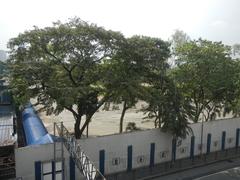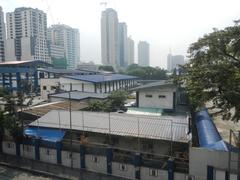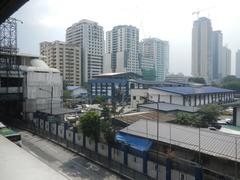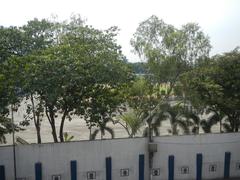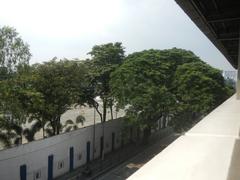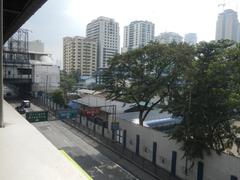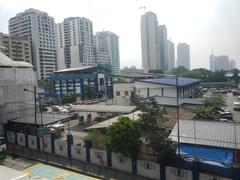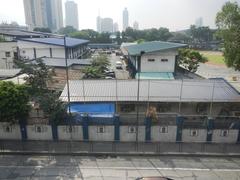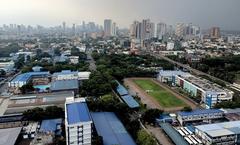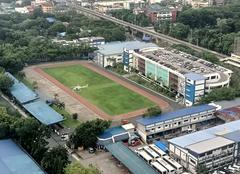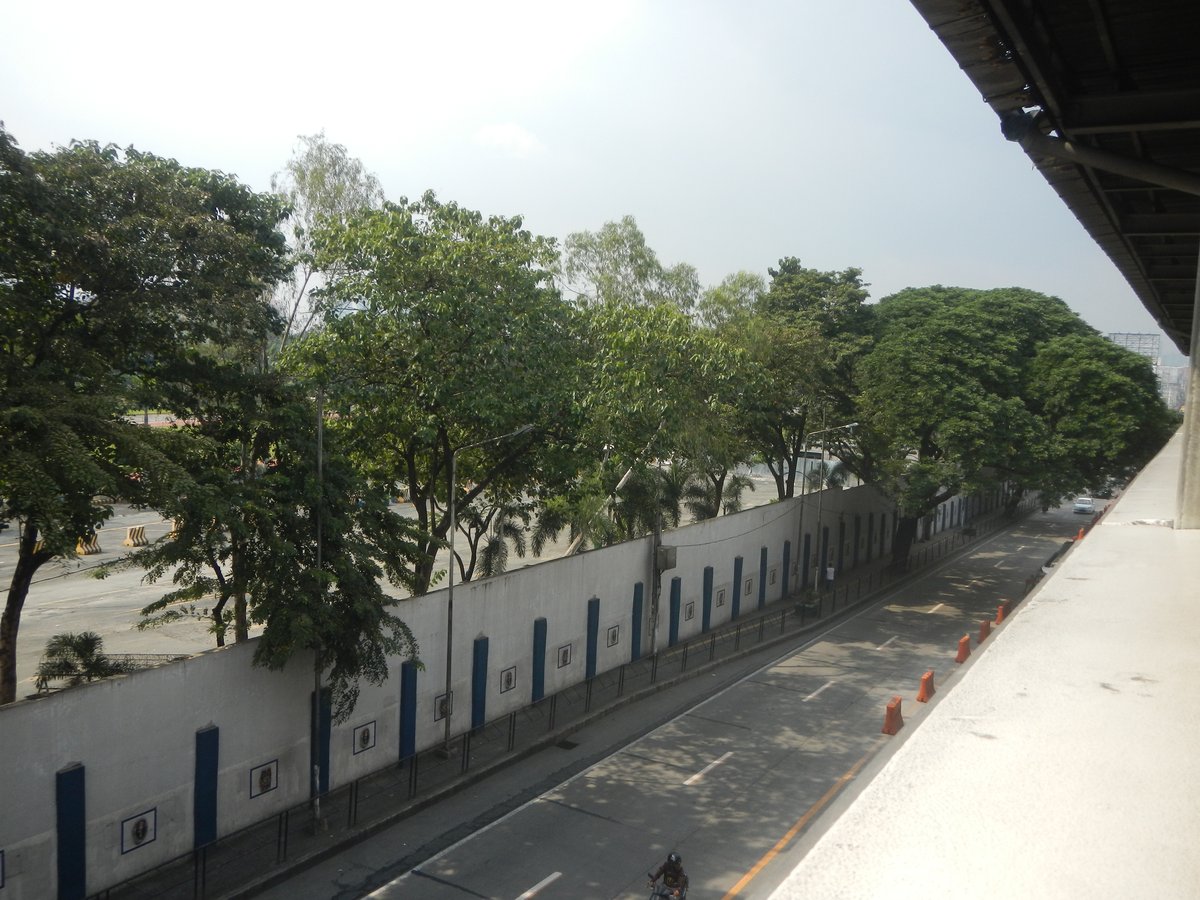
Camp Crame Visiting Hours, Tickets, and Historical Significance in Metro Manila
Date: 15/06/2025
Introduction
Camp Crame, situated along Epifanio de los Santos Avenue (EDSA) in Quezon City, stands as one of the Philippines’ most significant landmarks. As the headquarters of the Philippine National Police (PNP), it not only drives the nation’s law enforcement operations but also serves as a monument to pivotal moments in Philippine history. From its establishment in the early 20th century to its central role in the 1986 People Power Revolution, Camp Crame is a historic site that bridges the past and present, offering unique insights into the evolution of Philippine governance, policing, and democracy.
This comprehensive guide details Camp Crame’s origins, its enduring cultural and historical relevance, visitor protocols, accessibility, and practical tips for those wishing to learn more about this iconic site. Whether you are a history enthusiast, researcher, student, or traveler, understanding Camp Crame’s significance enriches your appreciation of Metro Manila’s storied past.
For the latest updates and official visitor information, always refer to the Philippine National Police website and the National Historical Commission of the Philippines.
Table of Contents
- Introduction
- Historical Overview
- Visiting Camp Crame: Essential Information
- Special Events and Photographic Spots
- Accessibility and Facilities
- Travel Tips and Nearby Attractions
- Frequently Asked Questions (FAQ)
- Conclusion
- References
Historical Overview
Origins and Development
Camp Crame was established in 1935 and named after Brigadier General Rafael Crame, the first Filipino chief of the Philippine Constabulary. Originally part of San Juan, Rizal, it became a key police and military installation, and its transfer to Quezon City in 1941 cemented its centrality in law enforcement history (Manila Standard). The camp has since evolved through several periods in Philippine policing, from the Constabulary era to the formation of the modern PNP in 1991.
Martial Law Era and the People Power Revolution
During Martial Law (1972–1986), Camp Crame was notorious as a detention center for political prisoners and a stronghold of military power. Its most defining moment came during the 1986 People Power Revolution, when it became a sanctuary for military defectors and a rallying point for peaceful civilian resistance. These events ultimately led to the restoration of democracy in the Philippines.
PNP Headquarters and Contemporary Role
Since 1991, Camp Crame has served as the administrative and operational hub of the PNP, overseeing the country’s law enforcement efforts. It houses the offices of the PNP Chief, strategic command centers, and specialized units for crime investigation, intelligence, cybercrime, and disaster response. The camp regularly hosts national events, policy announcements, and ceremonies, reinforcing its status as a symbol of national security and public service (RTVM).
Visiting Camp Crame: Essential Information
Location and Directions
Camp Crame is located along EDSA, directly across from Camp Aguinaldo, the headquarters of the Armed Forces of the Philippines. The camp is easily accessible by:
- MRT-3: Disembark at Santolan-Annapolis Station and walk or take a short taxi ride.
- Buses/Jeepneys: Numerous routes along EDSA stop near the camp.
- Private Vehicle: Enter via EDSA; parking is available but limited.
Access Policies and Security
As an active police headquarters, Camp Crame is a secure government facility with restricted access. Public entry is not generally permitted without prior arrangement.
- Regular Visiting Hours: There are no standard public visiting hours for the compound itself. Access is typically limited to official personnel, invited guests, or those with scheduled appointments.
- PNP Museum: Open Monday to Friday, 8:00 AM – 5:00 PM, by appointment only. No walk-in visitors are allowed.
- Admission: Free of charge for official tours and museum visits, but advance coordination is required.
- Security Protocols: Bring a valid government-issued ID, submit a visitor request beforehand, and comply with security screening. Prohibited items include weapons, large bags, drones, and unauthorized recording devices.
Museum and Points of Interest
- Philippine National Police Museum: Exhibits artifacts, uniforms, and memorabilia tracing the history of the Philippine Constabulary and PNP. Visits are by appointment (PNP Museum Info).
- Heritage Marker: Erected by the National Historical Commission to commemorate the camp’s role in the 1986 revolution.
- PNP Memorial Wall: Honors fallen police officers.
- Ceremonial Grounds: Venue for national events and official ceremonies.
Visitor Guidelines
- Dress Code: Modest, business casual attire is recommended. Avoid shorts, sleeveless shirts, and slippers.
- Conduct: Maintain respectful behavior, especially during ceremonies or in solemn areas.
- Photography: Allowed only in designated public zones and the museum, with explicit permission. Photography is prohibited in operational and sensitive areas.
- Accessibility: Main buildings are generally accessible to persons with disabilities; notify the administration in advance for assistance.
Special Events and Photographic Spots
- Commemorative Events: Camp Crame hosts annual ceremonies such as the People Power Revolution anniversary and the Police Service Anniversary (Manila Standard).
- Photographic Backdrops: Iconic sites include the main gate along EDSA, the heritage marker, and the PNP Memorial Wall. Always seek guidance before taking photos.
Accessibility and Facilities
- Restrooms: Available near the museum and administrative buildings.
- Parking: Limited; early arrival is advised.
- Canteens: Offer affordable meals, mainly for personnel but accessible to visitors.
- Medical Services: Onsite clinic and ambulance services available.
- Connectivity: Strong mobile signal; public Wi-Fi is limited.
Travel Tips and Nearby Attractions
- Transport: Use the MRT-3, official taxis, or ride-hailing apps to avoid EDSA traffic congestion, especially during rush hours.
- Nearby Landmarks:
- Camp Aguinaldo: Military headquarters with its own historical significance.
- Araneta Center: Shopping, dining, and entertainment hub.
- Quezon Memorial Circle: A park and heritage site.
- Greenhills Shopping Center and Ortigas Center: Offer further shopping and dining options (KeepTravel).
Frequently Asked Questions (FAQ)
Q: Can the general public visit Camp Crame?
A: Public access is restricted. Only those with official business, appointments, or scheduled tours may enter.
Q: Are there standard visiting hours or tickets?
A: There are no standard public visiting hours or ticketing. Visits to the PNP Museum or official events require advance coordination.
Q: Is photography allowed?
A: Photography is only permitted in designated areas and requires prior permission.
Q: Are guided tours available?
A: Yes, but these must be arranged in advance through the PNP Public Information Office.
Q: Is Camp Crame accessible for persons with disabilities?
A: Most main buildings are accessible; notify staff ahead for special accommodation.
Conclusion
Camp Crame is more than the administrative heart of Philippine policing—it is a living archive of the nation’s struggles and triumphs for peace, security, and democracy. While visitor access is limited due to its operational status, those who arrange tours are rewarded with a deeper understanding of the Philippines’ law enforcement legacy and the site’s role in shaping modern history. Complement your visit by exploring nearby cultural and historical landmarks in Quezon City.
For up-to-date information, policies, and tour arrangements, visit the Philippine National Police official website.
Download the Audiala app for guided tours and follow our social media channels for the latest news and articles about Metro Manila’s historic sites.
References
- Philippine National Police
- National Historical Commission of the Philippines
- Manila Standard
- RTVM
- Philippine Information Agency
- Department of Agriculture
- Philippine Tribune
- KeepTravel

